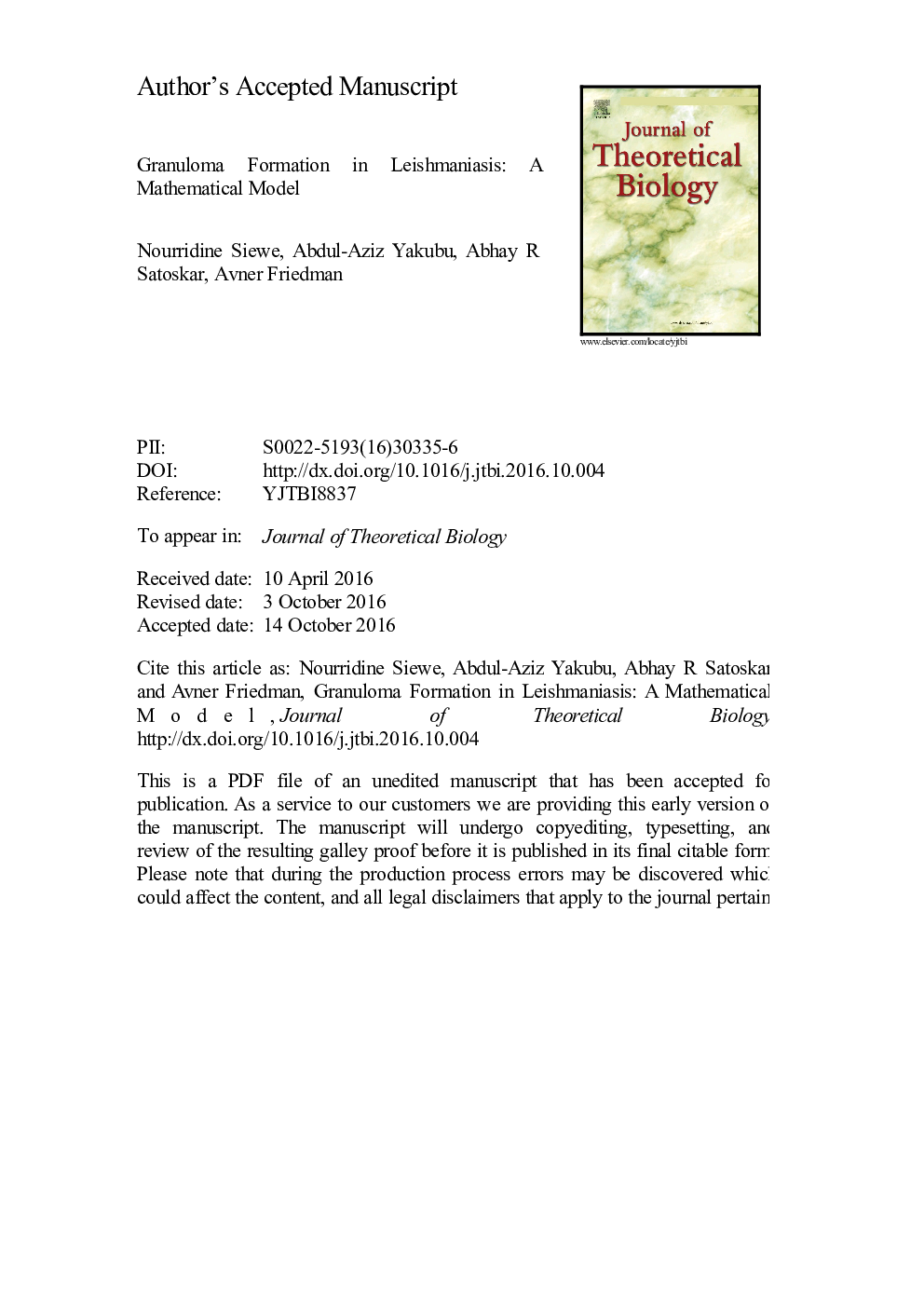| Article ID | Journal | Published Year | Pages | File Type |
|---|---|---|---|---|
| 6368798 | Journal of Theoretical Biology | 2017 | 34 Pages |
Abstract
Leishmaniasis is a disease caused by the Leishmania parasites. The two common forms of leishmaniasis are cutaneous leishmaniasis (CL) and visceral leishmaniasis (VL). VL is the more severe of the two and, if untreated, may become fatal. The hallmark of VL is the formation of granuloma in the liver or the spleen. In this paper, we develop a mathematical model of the evolution of granuloma in the liver. The model is represented by a system of partial differential equations and it includes migration of cells from the adaptive immune system into the granuloma; the rate of the influx is determined by the strength of the immune response of the infected individual. It is shown that parasite load decreases as the strength of the immune system increases. Furthermore, the efficacy of a commonly used drug, which increases T cells proliferation, increases in an individual with stronger immune response. The model also provides an explanation why, in contrast to humans, mice recover naturally from VL in the liver.
Keywords
Related Topics
Life Sciences
Agricultural and Biological Sciences
Agricultural and Biological Sciences (General)
Authors
Nourridine Siewe, Abdul-Aziz Yakubu, Abhay R Satoskar, Avner Friedman,
